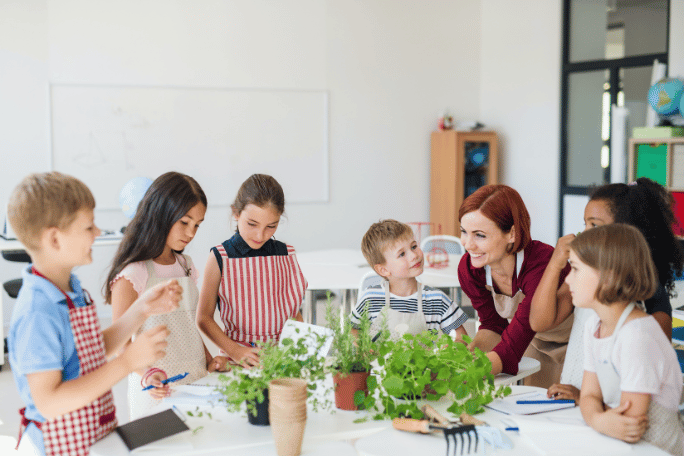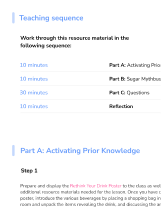Lesson summary
This lesson is designed for a flipped classroom, where students learn new content by watching a video in their own time. This strategy provides the opportunity for students to build their knowledge, attitudes and values by themselves, thereby freeing up class time for hands-on work.
Learning intentions:
Students will...
- recognise ways that science and art can be used in collaboration
- build their thinking and questioning skills.
Lesson guides and printables
Curriculum links
Select your curriculum from the options below.
Lesson details
Curriculum mapping
Australian Curriculum content descriptions:
Year 7 Science:
- Science knowledge can develop through collaboration and connecting ideas across the disciplines of science (ACSHE223)
Year 8 Science:
- People use understanding and skills from across the disciplines of science in their occupations (ACSHE227)
Year 9 Science:
- People can use scientific knowledge to evaluate whether they should accept claims, explanations or predictions (ACSHE160)
Year 10 Science:
- People can use scientific knowledge to evaluate whether they should accept claims, explanations or predictions (ACSHE194)
Year 7 & 8 Visual Arts:
- Analyse how artists use visual conventions in artworks (ACAVAR123)
- Identify and connect specific features and purposes of visual artworks from contemporary and past times to explore viewpoints and enrich their art-making, starting with Australian artworks including those of Aboriginal and Torres Strait Islander Peoples (ACAVAR124)
Year 9 & 10 Visual Arts:
- Evaluate how representations communicate artistic intentions in artworks they make and view to inform their future art making (ACAVAR130)
- Analyse a range of visual artworks from contemporary and past times to explore differing viewpoints and enrich their visual art-making, starting with Australian artworks, including those of Aboriginal and Torres Strait Islander Peoples, and consider international artworks (ACAVAR131)
General capabilities: Critical and creative thinking.
Syllabus Outcomes: SC4-17CW, SC4-13ES, SC5-13ES, SC5-13ES, VAS4.3, VAS4.7, VAS4.8, VAS4.9, VAS4.10, VAS5.7, VAS5.8, VAS5.9, VAS5.10.
Time needed: 30 minutes.
Level of teacher scaffolding: Low – allow students to explore the topic independently.
Resources required
- Internet
- Laptops and earphones
- Student Worksheet
Additional info
Artists used in this resource:


Welcome back!
Don't have an account yet?
Log in with:
Create your free Cool.org account.
Many of our resources are free, with an option to upgrade to Cool+ for premium content.
Already have an account?
Sign up with:
By signing up you accept Cool.org's Terms and Conditions(Opens in new tab) and Privacy Policy(Opens in new tab).